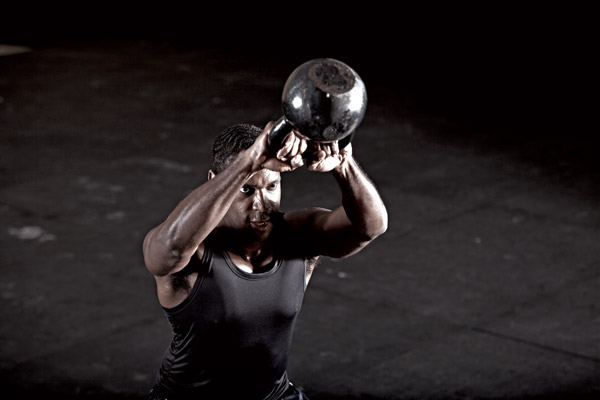Use ancient qigong deliberate breathing practices to sharpen your mind and body for better performance and faster recovery
Expert: Kevin Kearns
Nutrition consultant, author of Always Picked Last and strength and conditioning coach specializing in aging (burnwithkearns.com)
Breathing for added gym and sports performance
If you have ever been anywhere in Asia, you’ll see people in parks doing either tai chi or qigong exercises. You’ll also pick up that the crowd performing it is much older than you.
It would be all too easy to dismiss this as an old farts’ training regimen, however, there is power behind this thousand-year-old rejuvenating system that is a mixture of coordinated body posture, breathing and meditation used for health, spirituality, and martial arts.
With roots in Chinese medicine and philosophy, qigong is traditionally viewed as a practice to cultivate and balance qi (chi), translated as “life energy.”
Now, before you roll your eyes and think this is for folk on their way out, it’s not the age that counts, it’s the mileage on the body and brain. Having been fortunate enough to train with some of the best martial artists in the world, athletes used to rubbish this inner energy stuff in the same way they looked at yoga.

I was guilty of it myself, but after practicing yoga for nine years, it’s always wise to revamp your assumptions. Being able to control breathing is paramount to feeling healthy and healing yourself from the mind, to the body, to your being.
As a two-year practitioner full of serious doubts about this practice, I now realize its as important as strength training or cardiovascular exercise.
A paper by the European Society of Cardiology did find the regular practice of Tai chi-style breathing and exercises gave people better arterial compliance and muscle strength than non-practitioners.
It’s the constant blood flow that makes them stronger from the inside out. Chi – and the flow thereof – has been part of Eastern medicine since it’s inception almost 2500 years ago, while western medicine is only 300 years old and they are just starting to tap into alternative medicine or bio-feedback.
These techniques have been used successfully for many health issues.
Inhale the good
OK, so what’s in this for you? Well talk about the why first because this practice will improve many aspects of your health and wellness.
1. Improving your digestion.
The Chinese have long believed that humans have two brains – the one in your skull and the one in your gut. Proper breathing massages your internal organs. Its very similar to twists in yoga, which is called “rinsing” the organs.
2. Increase in good hormones
Deep, proper breathing allows the body to calm down and turn off your stress.
The clearing process in Qigong can be used on strongly repressed, as well as on spontaneously overexpressed, emotions and many of the movements can be refined to address problem areas.

3. Increasing flexibility
The more your body is able to relax at the most visceral level, the more you’ll allow tightness or stiffness in your muscles to subside. I learned through orthopedic surgeons, who informed me once someone is under anesthesia, they can move their joints wherever they want.
4. Loose muscles build power
Power comes from explosive contraction. The more relaxed, the greater the explosive movement.
5. Prevents injuries
Accidental injuries occur, with joints and ligaments particularly vulnerable. Qigong teaches better balance; it also teaches us how to turn correctly without straining, to move joints without locking and how to relax during a fall. It will also increase the flexibility and the spring of ligaments.
Think of it as a good, gentle stretch and an acupuncture treatment combined, which improves the circulation of fluids and energy in the body to lessen the impact of injuries and allow more rapid healing.
6. Strengthen connections
A primary way chi flows is along the nerves. At advanced levels of development, chi and the nerves can be felt separately. Your nerves are an intermediary between the body and mind, and it is through nerves we can gain access to information.
Much of the initial qigong work, which emphasizes getting in touch with the body and clearing out blockages, is accomplished through the nervous system. As your chi gets stronger through continued practice, your nerves are strengthened and your body awareness is enhanced.
7. Strengthening the connection between muscle and nerve
A primary way chi flows is along the nerves of the body. Although at advanced levels of development chi and the nerves can be felt separately, the great majority of beginners only have an awareness of their nerves.

Your nerves are an intermediary between the body and the mind, and it is through the nerves that we can gain access to information about our body.
Much of the initial qigong work, which emphasizes getting in touch with the body and clearing out blockages, is accomplished through the nervous system.
As your chi gets stronger through continued practice, your nerves are strengthened and your body awareness is enhanced. People with poor coordination and other motor problems can benefit greatly.
Qigong’s ability to strengthen the nervous system makes it a magnificently effective technique for relieving stress on a day-to-day basis, as well as rebuilding bodies that have broken down due to long-term stress.
How often should you do this?
I personally work with many college sports teams. They have been putting more emphasis on breathing and meditation, and as little as 15 minutes a few times a week can improve many aspects of your overall life. Whether it’s sports performance, home life or career, qigong can help enhance every aspect .
Warm up your lungs – slow and deliberate workout preparation
Deliberate breathing is an excellent way to focus, increase oxygen to your muscles and mentally prepare for a hard session. The best way to do this is through the archer.
Step 1
Stand with your knees bent and circle your arms to one side, then make like you are pulling the string of the bow back as you breathe out on a two count.
Step 2
Swing your hands to the other side as you breathe in for the count of six seconds.
Step 3
Do your workout, then repeat this procedure several times.
Taking a breather
Here’s how to hit your reset button with ease
You’re in between exercises and your heart rate is too high, or you can’t focus. Here’s how to reset the hard drive.
Step 1
Bend your knees, relax your shoulders and hold your hands in front of your belly. This will lower your heart rate and speed up recovery as you increase blood flow to the muscles and oxygen.
Step 2
Inhale through your nose for two seconds. Move your arms as if you’re grabbing water with cupped hands and splashing it into your face, staying upright. Next, raise your hands above your head,
in a circular motion.
Step 3
Exhale for six seconds through your mouth.
Step 4
Vary the position, doing the same exercise sitting on a bench, waiting for the next set.
For more content about breathing techniques for better gym and sports performance, nutrition, and workouts, get TRAIN magazine direct to your inbox every month for free by signing up to our newsletter







